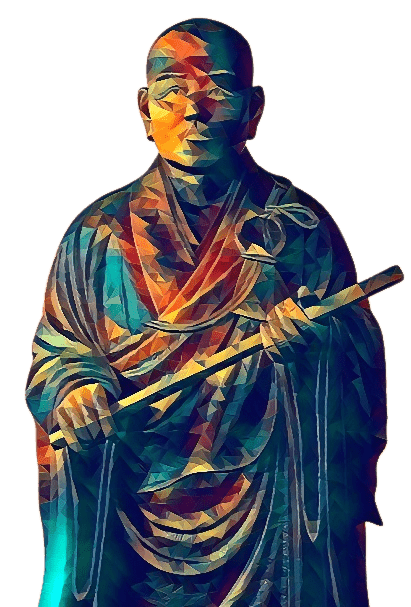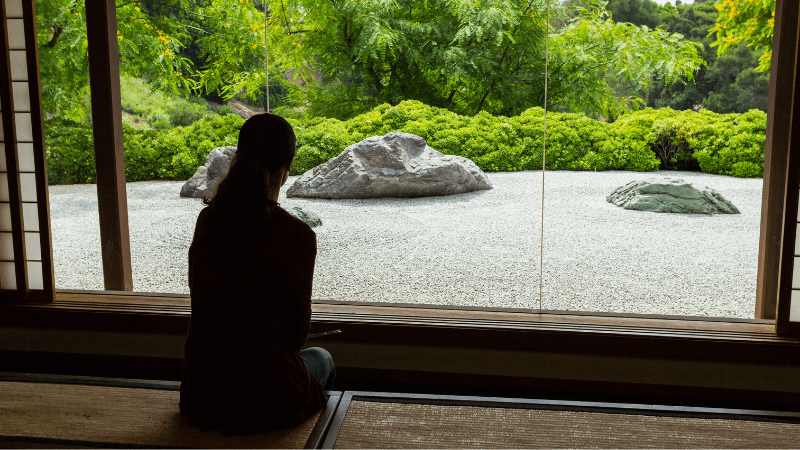The Difference Between Buddhism and Zen Buddhism
Understanding the differences between Buddhism and Zen Buddhism is important for anyone who practices either religion or wants to learn more about them. However, it is also important to understand that both also have many things in common.
What is Buddhism and what are its origins?
Buddhism is a religion and philosophy founded on the Indian subcontinent by Siddhartha Gautama. It teaches that suffering caused by desire and attachment can be ended by following the Middle Way. The Middle Way is a path of moderation between the extremes of self-love and self-mortification. Buddhism spread throughout Asia and became a major world religion.

But how exactly did Buddhism come into being?
Well, it all started with Siddhartha Gautama, of course. Who was he? Siddhartha Gautama was born into a wealthy family in what is now Nepal. He had everything you could want: a loving family, good friends, and all the material possessions you could dream of. He married when he was 16 years old and had a son. But despite all this, Siddhartha was not satisfied. He felt that there had to be more to life than pleasure and possessions. So, at the age of 29, he left his family and set out in search of the truth.
Siddhartha wandered for many years, studying with different teachers and learning about different philosophies. But he was not satisfied. Finally, he realized that he could find the answers he was looking for only in himself. So he sat down under a tree and meditated. After 49 days of meditation, Siddhartha had a sudden realization: he had found the answer to his question! He had attained enlightenment.
After his enlightenment, Siddhartha Gautama became known as Buddha, which means "the awakened one". With this term, most people are familiar and often think that this was his name, while Siddhartha Gautama is actually his first name and Buddha is just a title.
During his life he found that people were attracted by his message of hope and peace. He gave lectures, founded monasteries and had many followers. Even after his death, Buddhism continued to spread throughout Asia. Today it is a major world religion with over 500 million followers.
Now that we know a little about the history of Buddhism, let's take a look at what it teaches.
What is Zen Buddhism and how does it differ from traditional Buddhism?
Zen Buddhism is a form of Buddhism that emphasizes the practice of meditation and the personal experience of enlightenment. It originated in China and later spread to Japan, Korea and Vietnam. Zen Buddhism differs from traditional Buddhism in several ways. First, Zen Buddhists do not believe in reincarnation. Second, they do not worship the Buddha or other deities. Third, they do not believe in karma or moral causality. Fourth, they emphasize direct experience over the authority of the scriptures. Finally, Zen Buddhists try to live in the present moment and focus on the here and now.
How and when exactly did Zen Buddhism evolve from Buddhism?
The history of Zen Buddhism is a bit complicated and difficult to trace. However, it is believed that Zen Buddhism first developed in China during the Tang Dynasty (618-905 AD). At that time, Chinese Buddhism was heavily influenced by Indian Buddhism. One of the most important Chinese Buddhist monks of this period was Hui-Neng (Chinese: 慧能; pinyin: Huìnéng; Wade-Giles: Hui-nehng; Japanese: Enō, Korean Omnon), who is considered the Sixth Patriarch of Zen.
Hui-Neng is an important figure in Zen Buddhism because he emphasized the importance of direct experience and personal realization over the study of scriptures. He is also famous for his Platform Sutra, which is one of the most important texts in Zen Buddhism. In this text, Hui-Neng outlines the main principles of Zen Buddhism, which we will look at soon. But first, let's look at the basic principles of Buddhism, because they are the foundation.

The main principles of Buddhism
So what are the basic principles of Buddhism?
There are three main principles: the Four Noble Truths, the Eightfold Path, and karma. But we will also look at other important principles.
- The Four Noble Truths: The truth about suffering, the truth about the origin of suffering, the truth about ending suffering, and the truth about the way to end suffering.
- The Eightfold Path: Right understanding, right thinking, right speech, right action, right livelihood, right effort, right mindfulness and right concentration.
- Karma: The law of moral causality, which states that a person's actions have consequences, either in this life or in future lives.
Here are the other important principles:
- The three jewels: The Buddha, the Dharma (the teachings of the Buddha), and the Sangha (the community of monks and nuns). While the Buddha is a historical figure, the Dharma and the Sangha are considered timeless. The Buddha is considered a jewel because he is someone to be respected; the Dharma is considered a jewel because it is the truth that can lead to liberation, and the Sangha is considered a jewel because they are the ones who have achieved nirvana and can help others do the same. Often the three jewels are also referred to as the three refuges: "I take refuge in the Buddha, I take refuge in the Dharma, I take refuge in the Sangha."
- Nirvana: The goal of Buddhism is to achieve a state of perfect peace and freedom from suffering. It is often seen as synonymous with enlightenment or some kind of life after death, which is a bit contradictory considering that Buddhism believes in reincarnation - the next principle.
- Reincarnation: The belief that a person's soul is reborn in another person or creature after death. The correct term in Buddhism is "rebirth" and not "reincarnation," because the latter suggests that there is some kind of permanent soul that is reborn, which Buddhism denies. This permanent cycle is called samsara. So these are the main principles of Buddhism. If one practices the teachings of Buddhism, one will eventually reach nirvana and be liberated from samsara.
- The five commandments: Not to kill, not to steal, to abstain from sexual misconduct, not to lie, and not to ingest intoxicants. These five commandments can be seen as the equivalent of the Ten Commandments in Christianity.
The main principles of Zen Buddhism
Zen Buddhism has many of the same principles as traditional Buddhism, but there are some important differences. The most important principle of Zen Buddhism is the practice of zazen meditation, a form of mindfulness meditation that originated in Zen Buddhism itself.
Other important principles are to live in the present moment, to try to experience things directly, and to take a non-dualistic perspective.
By non-dualistic, we mean that Zen Buddhists believe that there is no separation between the self and the world around us. This principle is often summarized by the expression "the finger pointing to the moon." It means that our perception of reality is limited by our own subjectivity, but that reality itself is ultimately an undivided whole.
Another feature of Zen Buddhism is the use of koans, which are paradoxical questions or statements designed to challenge our preconceptions and expand our understanding.
A famous koan reads:
"What is the sound when a hand claps?"
There is no single correct answer to this question, but the point is to use it as a means to challenge our assumptions and expand our understanding.
One story tells how, shortly before his passing, he silently twirls a lotus flower in his hand before the assembled monks on Vulture Mountain. All the monks are stunned, except for Mahakashyapa, who smiles at this, expressing the quality of his inner vision. Then the Buddha declares that all his wisdom and mind have now passed to Mahakashyapa. Thus the wheel (dharma) of the Buddha teachings is set in motion and Mahakashyapa is the first of a series of Buddhist patriarchs. This story is the founding legend of Zen Buddhism.
Another common legend of Zen Buddhism is the story of Bodhidharma, who is said to have been the 28th patriarch of Buddhism. Bodhidharma was a Buddhist monk who traveled from India to China in the early fifth century, where he is said to have founded the Zen school of Buddhism. Legend has it that when he arrived in China, he was so impressed by the beauty of the land that he decided to meditate in a cave for nine years. At the end of his meditation, he is said to have had the realization that the true nature of reality is emptiness.
This legend illustrates the central principle of Zen Buddhism that reality is ultimately empty and cannot be grasped by the mind.
Another central principle of Zen Buddhism is that enlightenment can happen in an instant and does not necessarily require years of meditation or study.
This principle is often illustrated in the story of Rinzai, who was a disciple of Bodhidharma.
The story goes that when Rinzai first met Bodhidharma, he asked him how he could attain enlightenment.
Bodhidharma replied, "Bring me your cup and I will fill it."

Rinzai didn't understand what that meant, so he went away and meditated on it for years.
One day he suddenly had the realization that Bodhidharma was not speaking of a physical cup, but of the cup of his own mind.
When he realized this, he is said to have attained instant enlightenment.
So, those are some of the main principles of Zen Buddhism. In the next section we'll look at how you can incorporate these principles into your daily life, but first let's look at how to practice Buddhism in general.
How to practice Buddhism in your everyday life
There are many ways to practice Buddhism in your everyday life. The most important thing is to try to live in accordance with the principles of the religion. This means taking the Five Precepts seriously and making an effort to follow the Eightfold Path. It also means meditating regularly and being mindful of your thoughts, words and actions. In addition, it is important to study the teachings of the Buddha and develop an understanding of Buddhism.
Luke and I focus on the practical part of Buddhism, so we lean more towards Zen Buddhism, but it's hard to really understand it without knowing its basics: Buddhism.
How to practice Zen Buddhism in your everyday life
As in traditional Buddhism, there are many ways to practice Zen Buddhism in your everyday life. The most important thing is to live in the present moment and be mindful of your thoughts, words, and actions. It is also important to practice zazen meditation regularly. Other things you can do to incorporate Zen Buddhism into your life include studying the teachings of the Buddha, practicing yoga or Tai Chi, and spending time in nature.
Not sure how to practice zazen?
Don't worry, there are plenty of tools to help you get started. Here are a few things you can do:
- Read about zazen and how to do it.
- Watch a video or podcast about zazen.
- Find a local Zen center or group to join.
But in short, the basics are that you sit with your spine straight and your legs crossed (in the lotus position or half lotus position) and place your hands in your lap with the palms facing up. Then direct your gaze to a point in front of you and breathe in slowly and deeply. And that's it! Just let your mind go blank and focus on your breath. When thoughts come into your mind, just let them pass and focus on your breath again. With time and practice, you will be able to sit for longer periods of time and develop deeper concentration.

The lotus seat
The lotus position is a cross-legged sitting position in which each foot rests on the opposite thigh. This position is often used for meditation as it is considered more stable and comfortable than other sitting positions.
To assume the lotus position, first sit with your spine straight and your legs stretched out in front of you. Then bend your right knee and place your right foot on your left thigh. Next, bend your left knee and place your left foot on your right thigh. Finally, place your hands in your lap with your palms facing up.
If you are not able to sit in the full lotus position, you can try the half lotus position, which is similar but with only one leg crossed.
No matter what your religion or spiritual beliefs, meditation has many benefits. If you want to reduce stress, improve your focus and concentration, or simply slow down and live in the present moment, try zazen! You'll be surprised at how calming and refreshing it can be.
Zazen meditation has many benefits: it reduces stress, improves focus and concentration, and lets you slow down to live in the present moment.
Read koans
Reading koans can also be a helpful way to practice Zen Buddhism in your daily life. A koan is a paradoxical question or statement that serves to challenge our preconceptions and expand our understanding.
There are huge collections of koans available both online and in books. Among the most popular koans are "What does the sound of a hand clapping sound like?", "What did your face look like before you were born?", and "Why did Bodhidharma come to China?".
Try to read a few koans every day and reflect on their meaning. You will find that they help you think more deeply about life and see things from a new perspective.
By following these principles, you can begin to lead a more Buddhist lifestyle. Remember that the point is not to achieve perfection, but to strive for progress. Every day is a new opportunity to practice Buddhism and live a more meaningful and fulfilling life.
If you want to learn more about Buddhism, we recommend our article on the 5 best books on Buddhism for beginners.







